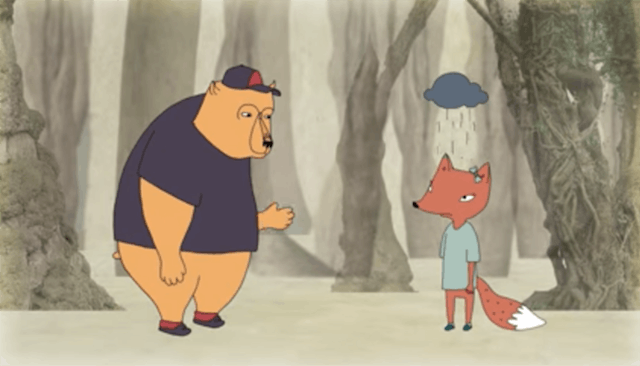This Video Can Teach Kids -- And Adults -- About Empathy

Empathy is a skill not everyone possesses
It’s sitting with your friend when a loved one dies. It’s holding your son’s hand when he’s scared. It’s hugging your spouse when they’ve had a bad day, or holding your daughter while she cries. It’s empathy, and it keeps society functioning. But despite our need to give and receive empathy, we don’t often understand what it is, and we don’t get how to teach it to our children.
Brown, famous for writing about the emotions that underpin everyday life, says, according to KQED News, that empathy “could be one of the most important qualities to develop in young citizens.”
Empathy is not trying to fix a bad feeling; instead, it’s being present with someone. Brown says, “what makes something better is connection.” Empathy means stepping into the shoes of another person and refraining from judgement, seeing emotion in others and communicating it. She calls it “feeling with people.” Empathy, she says, is the vulnerable choice, “because you have to connect with something in yourself that understands that feeling.” Imagine your child throwing a tantrum. To show empathy for them, you have to summon up the feeling of wanting something badly and not getting it, then sit down and feel that feeling with them, without judgment. That’s a hard thing to do.
And it’s different from sympathy. Unlike empathy, Dr. Brown says in Brené Brown on Empathy, sympathy drives disconnection. “Sympathy is ‘Oh, it’s bad, huh? You want a sandwich?” Empathy makes the vulnerable choice to recall the emotion that the other person is feeling. Sympathy doesn’t make that choice, but instead tries to deflect the person’s feelings. We offer sympathy when we try to put a silver lining around something, often by using the words “at least.” “Empathetic responses rarely start with the words ‘at least’,” Brown says in her video. Empathy is feeling with people. Sympathy is not. Empathy says, “I know what it’s like down here and you’re not alone,” Brown says. Sympathy keeps itself aloof and doesn’t reach out to feel what the other person is feeling. It offers disconnection instead of connection.
There are lots of ways we can teach empathy to our kids. They can learn it from us, their parents. When we empathize with their sadness, when they see us show empathy to others, they learn to use empathy in their own lives. This can be as simple as sitting with them when they’ve cut their finger. We remember what it’s like to be hurt, and we can say things like, “I’m sorry you cut your finger. I wish I could make it better for you.” Every parent knows that works better than, “I know your finger hurts. But at least you have a Batman bandaid!” That response tries to make a silver lining, and hence lessen their pain without really trying to understand it.
Brown says that it’s a “skill and a choice to be connected.”
We need to teach empathy in our schools and our homes, because only by practicing it will our children grow up to be the empathetic people we want them to be. We can read. We can allow pretend play. But most of all, we can be present and connected to our children in their pain and sadness and suffering. By that example, they will learn the skill, and make the choice, to be connected to others.